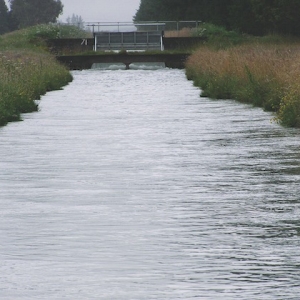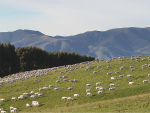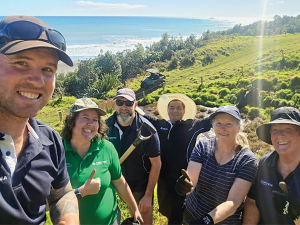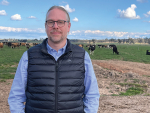IN ECOLOGY, the word sustainability describes how biological systems remain diverse and productive over time; it requires the reconciliation of environmental, social equity and economic demands, also referred to as the three ‘pillars’ of sustainability, or the three ‘Es’.
In other words, it means the capacity to endure, and that’s relevant for all New Zealand dairy farmers, as we all have a responsibility to ensure milk production is sustainable.
As the world’s population continues to rise, as does the demand for agriculture and safe food, sustainability has never been more important.
There is now much closer scrutiny on farmers to show that the use of resources (land and water) is done in a sustainable way, as communities around the country watch and question whether we are doing everything we can to protect the environment for future generations.
Most farmers see themselves as custodians of the land, but are also well aware of the need to maintain profitability at the same time; so a careful balance is required, particularly when it comes to nutrient management and water use.
Water
The National Water Policy statement (2011) directs all regional councils to ensure water quality is maintained or improved and to manage catchments that are currently over-allocated in water use.
Different regional councils are tackling this in different ways, but previously water that was often taken as being a ‘right’ is now being measured to ensure that over-allocation does not continue and processes are in place to decide who gets the water within a catchment and how much.
This is being worked out by:
- Consent and application processes for new dairy conversions
- Re-assessment of current dairy farms water use in over allocated catchments
- Requirement for water plans and metering of water use on-farm.
Water quality within the dairy sector is set out in the ‘Sustainable Dairying: Water Accord’ 2013 which aims to “enhance the overall performance of dairy farming as it affects freshwater by committing to good management practices of all dairy farmers in NZ.”
This is worked out through:
- Fencing of all waterways and protection of significant wetlands
- Riparian planting along water ways to catch nutrient run-off
- Better application of effluent and fertilisers
- Research into best management practices of winter grazing and crop management.
Nutrient management
Nutrient management is directly related to water quality as it is the escaping of key nutrients such as nitrogen (N) and phosphorus (P) that leads to reduced water quality.
N and P attributes to the growth of algae and other water living plants that can affect drinking water quality and safety for recreational use.
Nitrate in drinking water is also a major health hazard, and the Ministry of Health drinking water standards (1998) set the maximum acceptable level of nitrate in drinking water as 11.3ppm.
The ‘Sustainable Dairying: Water Accord’ has also set targets to better manage nutrients on dairy farms. Dairy companies have signed up to this accord and will start working with farmers by:
- Modelling N loss and N conversion efficiency
- Provide N loss and N conversion efficiency performance information back to farmers
- Engage with regional councils to reduce nutrient losses where losses are deemed to be too high
- Engage in catchment programs that improve good management practises on farm
• Darren Sutton is LIC FarmWise consultant, Waikato. This article first appeared in Getting the Basics Right 2014 edition.


















